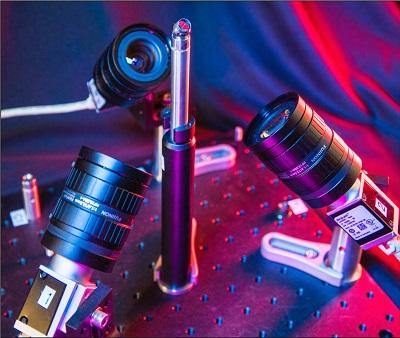Single-Pixel Touchless Laser Tracker Probe (Pixel Probe)

The CTL Antenna Metrology Project invented the Single-Pixel Touchless Laser Tracker Probe (Pixel Probe) out of necessity. As NIST researchers were developing CROMMA, the world’s first robot-arm antenna-measurement system, they found that, to measure with accuracy to one-fiftieth of a wavelength or less at 183 gigahertz, they needed to pinpoint the robot arm to 33 microns of 3D space or less. That’s about 10 times the precision the robot was capable of out of the box.
And so they developed the Pixel Probe, a touchless laser tracker using three machine-vision cameras arranged in a tetrahedral formation to discretize a scene down to the spatial resolution of a pixel. A single pixel from each camera links to a laser tracker through a NIST-developed calibration process. The three pixels define a point in space that then serves as a virtual touch probe to be “placed” on an object by means of viewing the camera images. This allows one to measure, using an accompanying laser tracker, the location of tiny features on an object without needing physical contact.
The first version of the Pixel Probe achieved 25 micron resolution in free space; using higher-resolution cameras and lenses will enable even better resolution going forward.
In addition to calibrating CROMMA, the probe can measure objects that cause problems for traditional laser-tracker probes, including sharp edges and corners, as well as amorphous, soft and intangible items such as streams of water or laser beams.
Specs
• Three 2,592 × 1,944 complementary metal-oxide semiconductor (CMOS) pixel arrays, also known as focal plane arrays (FPA)
• Three 12.5-mm focal length low-distortion machine vision lenses

